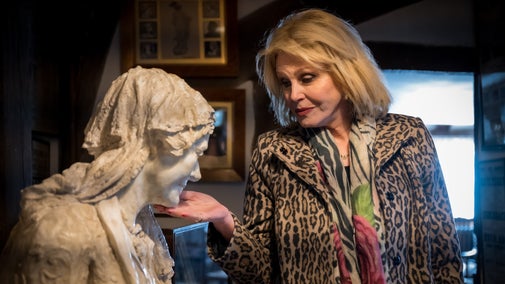
People in history
Discover some of the social history behind the places we care for and uncover fascinating facts about the people who have lived in them.


Edith Craig had a famous mother in Victorian actor Ellen Terry, but was herself a prominent producer, writer, and actor. With her partner Christopher St John, Edith created notable plays and protested during the suffrage movement to further the cause of women’s rights. Read more to find out about their work to highlight the issues through theatrical activism to help get the vote for women.
Actor, producer and designer, Edith Craig (1869-1947) was a suffragette and socialist, and later director of the feminist Pioneer Players for almost 15 years from 1911.
Her partner, Christopher St John (1871-1960), born Christabel Marshall, was a feminist playwright, suffragette, and author. Before her activist career, Christopher was secretary to the young Winston Churchill, and his fiercely anti-suffrage mother, Lady Randolph Churchill.
Edith devised A Pageant of Great Women with the dramatist and actor, Cicely Hamilton, in 1909. The spectacle showcased historical heroines including Sappho, Jane Austen, Elizabeth Fry, and Joan of Arc.
At the climax, the character of Woman addressed men everywhere: ‘I stand/For the clear right to hold my life my own’ and ‘This you must know:/The world is mine, as yours’.
The production consisted of three main roles: Justice, Woman and Prejudice, with the first two parts played by women and the last by a man.
Edith’s mother, actor Ellen Terry, took a cameo role playing Nance Oldfield and described it as ‘the finest practical piece of propaganda’.
The Pageant made the front page of the Daily Mail in November 1909, attracting positive publicity at a time when suffragettes were being portrayed as violent troublemakers.
It was performed at venues including The Royal Albert Hall, The Savoy Theatre and The Philharmonic Hall in 1912, after a speech by Emmeline Pankhurst. The play was a great success and requested by women’s groups throughout the country.
Edith produced around 150 suffrage plays which were equally important to the cause. She wished to reach out to all classes and the plays were often written in the form of entertaining farces, in which men get their retribution and women join the suffragettes.
Although supportive of her daughter and her theatrical activism, Ellen was not impressed by what she deemed as militant suffragettes. In her late fifties however in the early 1900s, she found fewer acting parts, and spiralled into financial crisis.
Taking the political climate into consideration, she devised a series of touring lectures with Edith's encouragement based on her experience of playing Shakespeare's women.
She toured England, Australia, New Zealand, and the US offering passages from the plays, with her own thoughts on the characters and a woman’s role in modern society.
For the 1909 Green White and Gold Fair, Edith co-designed reconstructed prison cells so visitors could see the conditions in which suffragettes and others were being kept. In the same year, Christopher wrote the pro-suffrage play How the Vote was Won, which Edith directed and appeared in.
Craig also designed the 18 June 1910 suffrage procession entitled From Prison to Citizenship, which took place under the aegis of the Women's Social and Political Union (WSPU) and the Women's Freedom League.
Christopher was brought before the police court, having been arrested on 18 February 1909 for obstructing the police outside the House of Commons. In the same year, she joined a WSPU deputation to the House of Commons, and was arrested for setting fire to a postbox.
In May 1910, Edith toured Scotland and Wales speaking and fundraising for women’s suffrage. She also sold the Votes for Women newspaper in the streets of London, saying: 'I love it. But I'm always getting moved on.’
Edith’s mother Ellen bought the 16th-century Smallhythe Place in 1899, and gave her daughter the use of a home in the grounds – Priest's House. Edy lived there with Christopher, and they were later joined by artist Tony Atwood, originally called Clare who also adopted a male name.
Their relationships lasted the rest of their lives. Smallhythe was important to them all as a loving home, but Edith also transformed it into a vibrant, radical place filled with creative spirits and pioneering women.

Smallhythe was visited by many other queer women including Virginia Woolf and her lover Vita Sackville-West, who lived at nearby Sissinghurst. Christopher, like many women, was quickly mesmerised by Vita, and recorded her intense feelings in her diary.
Edith was the most important figure in preserving Smallhythe for future generations. When her mother died, she made the house into a museum in her memory, and converted the barn into a theatre that hosted famous figures both on stage and in the audience. Few places offer such immersion in the world of theatre and queer history.
After Edith's death in March 1947, Christopher recalled: ‘Different as were our antecedents, our characters, our temperaments, our talents, we belonged to the same world, the artist's world. That established a camaraderie which was perfectly easy, unguarded and spontaneous.'
- Edith Craig
This article contains contributions from Dr Sophie Duncan, a researcher at Oxford University, who specialises in women’s theatrical, domestic, and political lives in both the Renaissance and Victorian eras.

Discover some of the social history behind the places we care for and uncover fascinating facts about the people who have lived in them.

A hub for multi-disciplinary research projects and research engagement at the University of Oxford
Find out more about our Trusted Source articles, which were created in partnership with the University of Oxford, and explore topics related to the special places in our care.

Discover the history of Smallhythe Place, from a centre for royal ship building to the home of Ellen Terry, one of the most famous Shakespearean actors of the Victorian times.

Step into the Ellen Terry Museum at Smallhythe Place, a creative haven dedicated to the late Victorian actress, curated by her daughter Edy Craig.

Find out about the work we do in the winter months to maintain and conserve the museum, house, theatre and garden at Smallhythe, ready for the next season, including costume conservation.

Discover what's on offer for families throughout our open season.

The community of workers living in Smallhythe made it a thriving and successful port. Learn about what was there before the shipyard’s decline in the 16th century.

Joanna Lumley follows in some famous footsteps as patron of the Barn Theatre. Discover how her local connections, love of the stage and acting pedigree make her the perfect choice.
